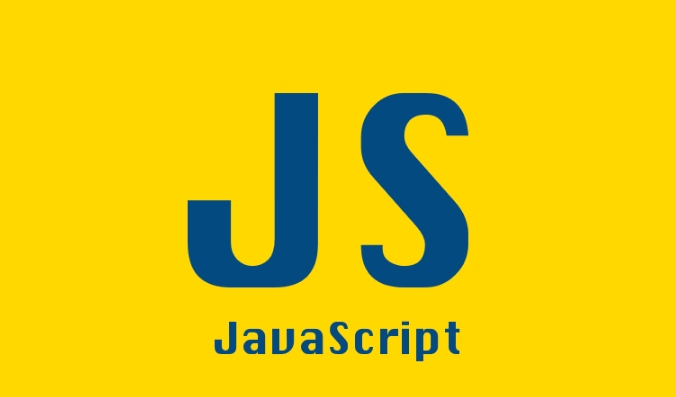JavaScript's event loop ensures that asynchronous operations are executed in an orderly manner. The answer is: 1. Execute synchronous code first; 2. Asynchronous tasks are processed by the Web API and entered the corresponding queue; 3. The event loop prioritizes the micro-task queue and then executes macro tasks. Therefore, the code first outputs synchronous content, then executes micro-tasks such as Promise.then, and finally handles macro-tasks such as setTimeout, forming a specific output sequence, and the complete process continues to schedule the tasks in a closed-loop manner until they are finished.

The JavaScript event loop is often misunderstood because it's invisible — you can't see it running — but it's the backbone of how JavaScript handles asynchronous operations while staying single-threaded. Let's break it down visually and simply, so you can see what's really happening behind the scenes.

? How JavaScript Runs Code: The Call Stack
Imagine a to-do list where JavaScript keeps track of functions to run. This is the call stack .
function greet() {
console.log("Hello");
}
greet(); When greet() is called, it's added to the stack. After it runs, it's removed. Simple.

Now, what happens when you have something asynchronous, like:
console.log("Start");
setTimeout(() => console.log("Timeout"), 0);
console.log("End");You'd expect:

Start Timeout End
But you actually get:
Start End Timeout
Why? Because JavaScript doesn't just have a call stack — it has other parts working behind the scenes.
? The Three Key Players
Think of JavaScript's runtime like a small office with three workers:
- Call Stack – The worker actively doing tasks (executing functions).
- Callback Queue (Task Queue) – A waiting line for tasks that are ready to be processed (eg,
setTimeout,fetchresponses). - Event Loop – The manager that checks: “Is the call stack empty? Can I move something from the queue?”
And don't forget:
- Web APIs – Not part of JavaScript, but built into the browser (or Node.js). They handle things like
setTimeout, DOM events, HTTP requests, etc.
?? Visual Walkthrough: What Happens in setTimeout
Let's step through this code:
console.log("A");
setTimeout(() => console.log("B"), 0);
console.log("C");Here's what happens behind the scenes:
-
console.log("A")→ added to call stack → runs immediately → prints "A" -
setTimeout(...)→ added to stack- The browser sees this and says: “I'll handle the timer”
- It starts a 0ms timer via Web API
-
setTimeoutis removed from the stack
-
console.log("C")→ runs → prints "C" - The timer finishes instantly (0ms), but the callback
() => console.log("B")can't run yet- It's sent to the Callback Queue
- The Event Loop checks: Is the call stack empty?
- Yes! Nothing is running now.
- So it moves the callback from the queue to the call stack
-
console.log("B")runs → prints "B"
So order: A → C → B
?? Microtasks vs Macrotasks: A Deeper Layer
Not all async tasks are equal. There are two queues:
- Macrotask Queue :
setTimeout,setInterval,setImmediate, I/O, UI rendering - Microtask Queue :
Promise.then/catch/finally,queueMicrotask,MutationObserver
? The event loop gives microtasks priority . After every macrotask, it runs all microtasks before going back to the macrotask queue.
Example:
console.log("1");
setTimeout(() => console.log("2"), 0);
Promise.resolve().then(() => console.log("3"));
Promise.resolve().then(() => console.log("4"));
console.log("5");Output:
1 5 3 4 2
Why?
-
1and5run sync. -
setTimeout→ goes to macrotask queue - Promises → go to microtask queue
- After the main script, event loop:
- Sees microtasks: runs all (3, then 4)
- Then checks macrotasks: runs
2
This is critical — microtasks run before the next render or setTimeout .
? Event Loop in a Loop (Pseudocode Style)
You can think of the event loop like this infinite loop:
while (true) {
if (callStack.isEmpty()) {
const microtask = microtaskQueue.pop();
if (microtask) {
run(microtask);
} else {
const task = macrotaskQueue.pop();
if (task) {
run(task);
}
}
}
}Key rule: Run all microtasks after each macrotask .
? Why This Matters
Understanding the event loop helps you:
- Debug why async code doesn't run in the order you expect
- Avoid blocking the main thread (eg, long loops freeze the UI)
- Use
queueMicrotaskorPromisehacks when you need something to run right after current code - Know why
setTimeout(fn, 0)isn't truly “immediate”
? Summary (Visual Recap)
Imagine this flow:
[Call Stack] ← Event Loop ← [Microtask Queue]
↑
[Macrotask Queue]
↑
[Web APIs (Browser)]- Sync code runs → call stack
- Async stuff → offloaded to Web API
- When ready → goes to queue (micro or macro)
- Event loop waits for stack to clear
- Microtasks first, then one macrotask at a time
Basically, the event loop is JavaScript's way of multitasking without threads — by cleverly managing what runs when. Once you see it as a loop that shuttles callbacks from queues to the stack, the “magic” becomes clear.
The above is the detailed content of The JavaScript Event Loop Explained Visually. For more information, please follow other related articles on the PHP Chinese website!

Hot AI Tools

Undress AI Tool
Undress images for free

Undresser.AI Undress
AI-powered app for creating realistic nude photos

AI Clothes Remover
Online AI tool for removing clothes from photos.

Clothoff.io
AI clothes remover

Video Face Swap
Swap faces in any video effortlessly with our completely free AI face swap tool!

Hot Article

Hot Tools

Notepad++7.3.1
Easy-to-use and free code editor

SublimeText3 Chinese version
Chinese version, very easy to use

Zend Studio 13.0.1
Powerful PHP integrated development environment

Dreamweaver CS6
Visual web development tools

SublimeText3 Mac version
God-level code editing software (SublimeText3)
 How to make an HTTP request in Node.js?
Jul 13, 2025 am 02:18 AM
How to make an HTTP request in Node.js?
Jul 13, 2025 am 02:18 AM
There are three common ways to initiate HTTP requests in Node.js: use built-in modules, axios, and node-fetch. 1. Use the built-in http/https module without dependencies, which is suitable for basic scenarios, but requires manual processing of data stitching and error monitoring, such as using https.get() to obtain data or send POST requests through .write(); 2.axios is a third-party library based on Promise. It has concise syntax and powerful functions, supports async/await, automatic JSON conversion, interceptor, etc. It is recommended to simplify asynchronous request operations; 3.node-fetch provides a style similar to browser fetch, based on Promise and simple syntax
 JavaScript Data Types: Primitive vs Reference
Jul 13, 2025 am 02:43 AM
JavaScript Data Types: Primitive vs Reference
Jul 13, 2025 am 02:43 AM
JavaScript data types are divided into primitive types and reference types. Primitive types include string, number, boolean, null, undefined, and symbol. The values are immutable and copies are copied when assigning values, so they do not affect each other; reference types such as objects, arrays and functions store memory addresses, and variables pointing to the same object will affect each other. Typeof and instanceof can be used to determine types, but pay attention to the historical issues of typeofnull. Understanding these two types of differences can help write more stable and reliable code.
 React vs Angular vs Vue: which js framework is best?
Jul 05, 2025 am 02:24 AM
React vs Angular vs Vue: which js framework is best?
Jul 05, 2025 am 02:24 AM
Which JavaScript framework is the best choice? The answer is to choose the most suitable one according to your needs. 1.React is flexible and free, suitable for medium and large projects that require high customization and team architecture capabilities; 2. Angular provides complete solutions, suitable for enterprise-level applications and long-term maintenance; 3. Vue is easy to use, suitable for small and medium-sized projects or rapid development. In addition, whether there is an existing technology stack, team size, project life cycle and whether SSR is needed are also important factors in choosing a framework. In short, there is no absolutely the best framework, the best choice is the one that suits your needs.
 JavaScript time object, someone builds an eactexe, faster website on Google Chrome, etc.
Jul 08, 2025 pm 02:27 PM
JavaScript time object, someone builds an eactexe, faster website on Google Chrome, etc.
Jul 08, 2025 pm 02:27 PM
Hello, JavaScript developers! Welcome to this week's JavaScript news! This week we will focus on: Oracle's trademark dispute with Deno, new JavaScript time objects are supported by browsers, Google Chrome updates, and some powerful developer tools. Let's get started! Oracle's trademark dispute with Deno Oracle's attempt to register a "JavaScript" trademark has caused controversy. Ryan Dahl, the creator of Node.js and Deno, has filed a petition to cancel the trademark, and he believes that JavaScript is an open standard and should not be used by Oracle
 Handling Promises: Chaining, Error Handling, and Promise Combinators in JavaScript
Jul 08, 2025 am 02:40 AM
Handling Promises: Chaining, Error Handling, and Promise Combinators in JavaScript
Jul 08, 2025 am 02:40 AM
Promise is the core mechanism for handling asynchronous operations in JavaScript. Understanding chain calls, error handling and combiners is the key to mastering their applications. 1. The chain call returns a new Promise through .then() to realize asynchronous process concatenation. Each .then() receives the previous result and can return a value or a Promise; 2. Error handling should use .catch() to catch exceptions to avoid silent failures, and can return the default value in catch to continue the process; 3. Combinators such as Promise.all() (successfully successful only after all success), Promise.race() (the first completion is returned) and Promise.allSettled() (waiting for all completions)
 What is the cache API and how is it used with Service Workers?
Jul 08, 2025 am 02:43 AM
What is the cache API and how is it used with Service Workers?
Jul 08, 2025 am 02:43 AM
CacheAPI is a tool provided by the browser to cache network requests, which is often used in conjunction with ServiceWorker to improve website performance and offline experience. 1. It allows developers to manually store resources such as scripts, style sheets, pictures, etc.; 2. It can match cache responses according to requests; 3. It supports deleting specific caches or clearing the entire cache; 4. It can implement cache priority or network priority strategies through ServiceWorker listening to fetch events; 5. It is often used for offline support, speed up repeated access speed, preloading key resources and background update content; 6. When using it, you need to pay attention to cache version control, storage restrictions and the difference from HTTP caching mechanism.
 Leveraging Array.prototype Methods for Data Manipulation in JavaScript
Jul 06, 2025 am 02:36 AM
Leveraging Array.prototype Methods for Data Manipulation in JavaScript
Jul 06, 2025 am 02:36 AM
JavaScript array built-in methods such as .map(), .filter() and .reduce() can simplify data processing; 1) .map() is used to convert elements one to one to generate new arrays; 2) .filter() is used to filter elements by condition; 3) .reduce() is used to aggregate data as a single value; misuse should be avoided when used, resulting in side effects or performance problems.
 JS roundup: a deep dive into the JavaScript event loop
Jul 08, 2025 am 02:24 AM
JS roundup: a deep dive into the JavaScript event loop
Jul 08, 2025 am 02:24 AM
JavaScript's event loop manages asynchronous operations by coordinating call stacks, WebAPIs, and task queues. 1. The call stack executes synchronous code, and when encountering asynchronous tasks, it is handed over to WebAPI for processing; 2. After the WebAPI completes the task in the background, it puts the callback into the corresponding queue (macro task or micro task); 3. The event loop checks whether the call stack is empty. If it is empty, the callback is taken out from the queue and pushed into the call stack for execution; 4. Micro tasks (such as Promise.then) take precedence over macro tasks (such as setTimeout); 5. Understanding the event loop helps to avoid blocking the main thread and optimize the code execution order.






